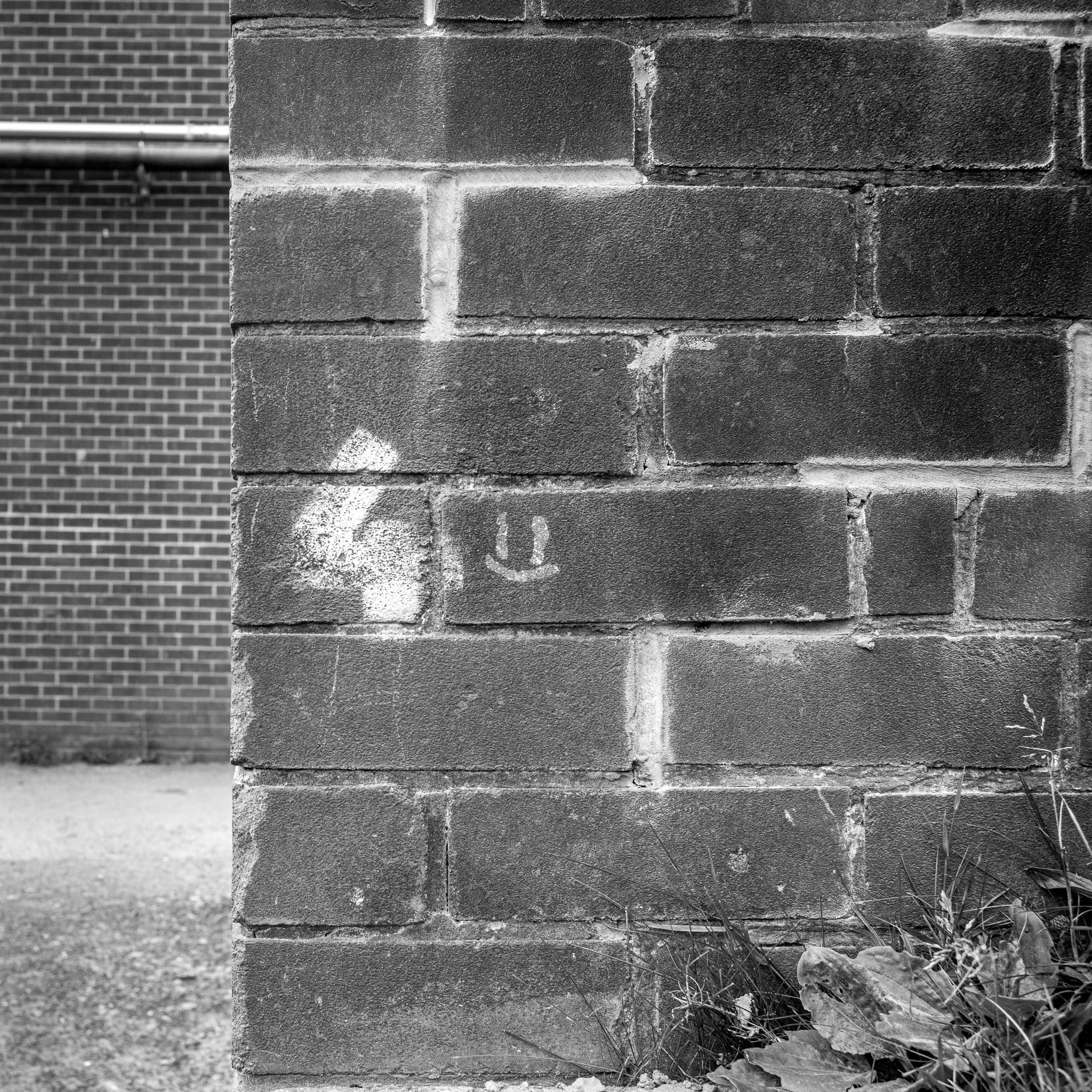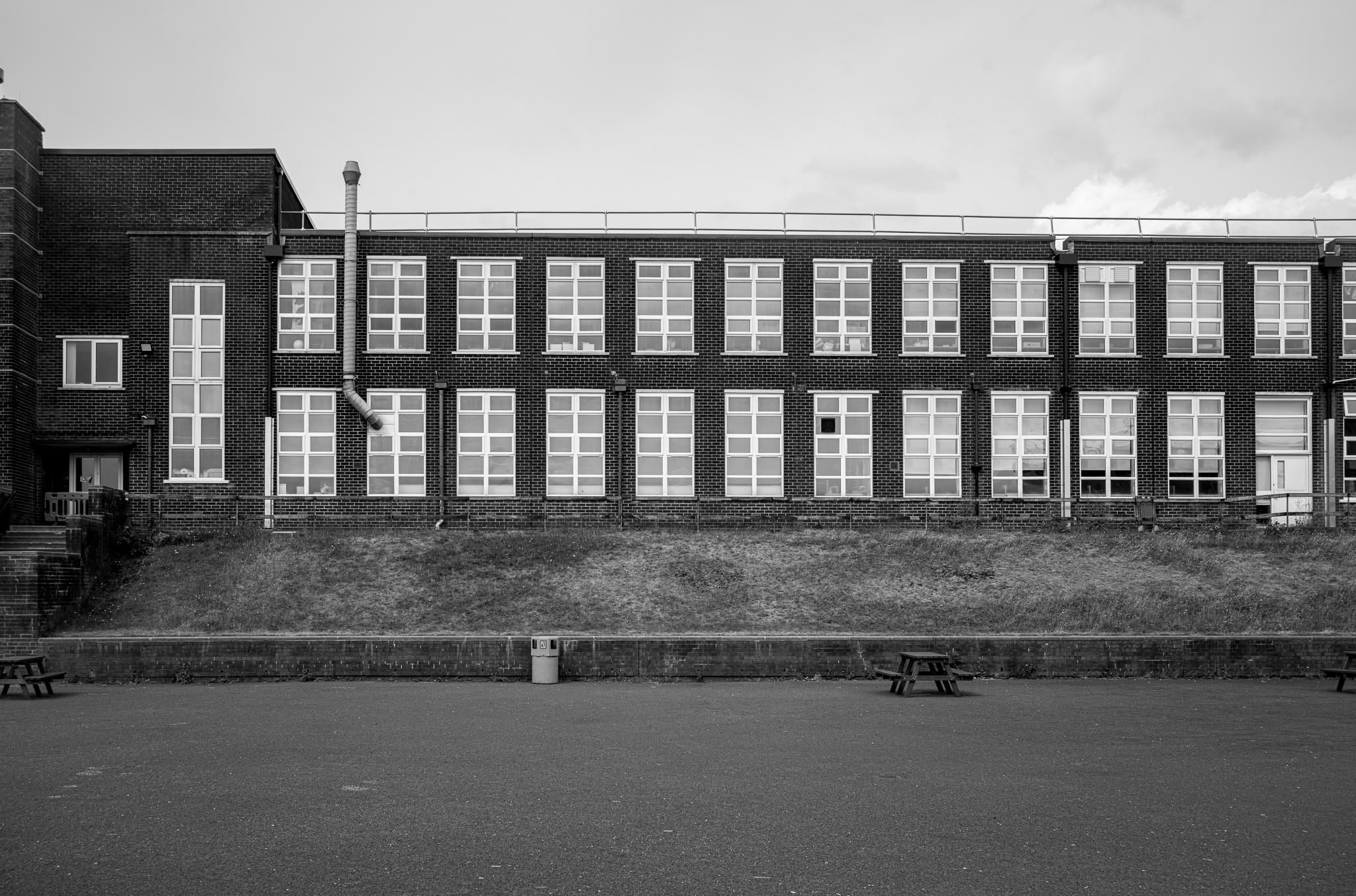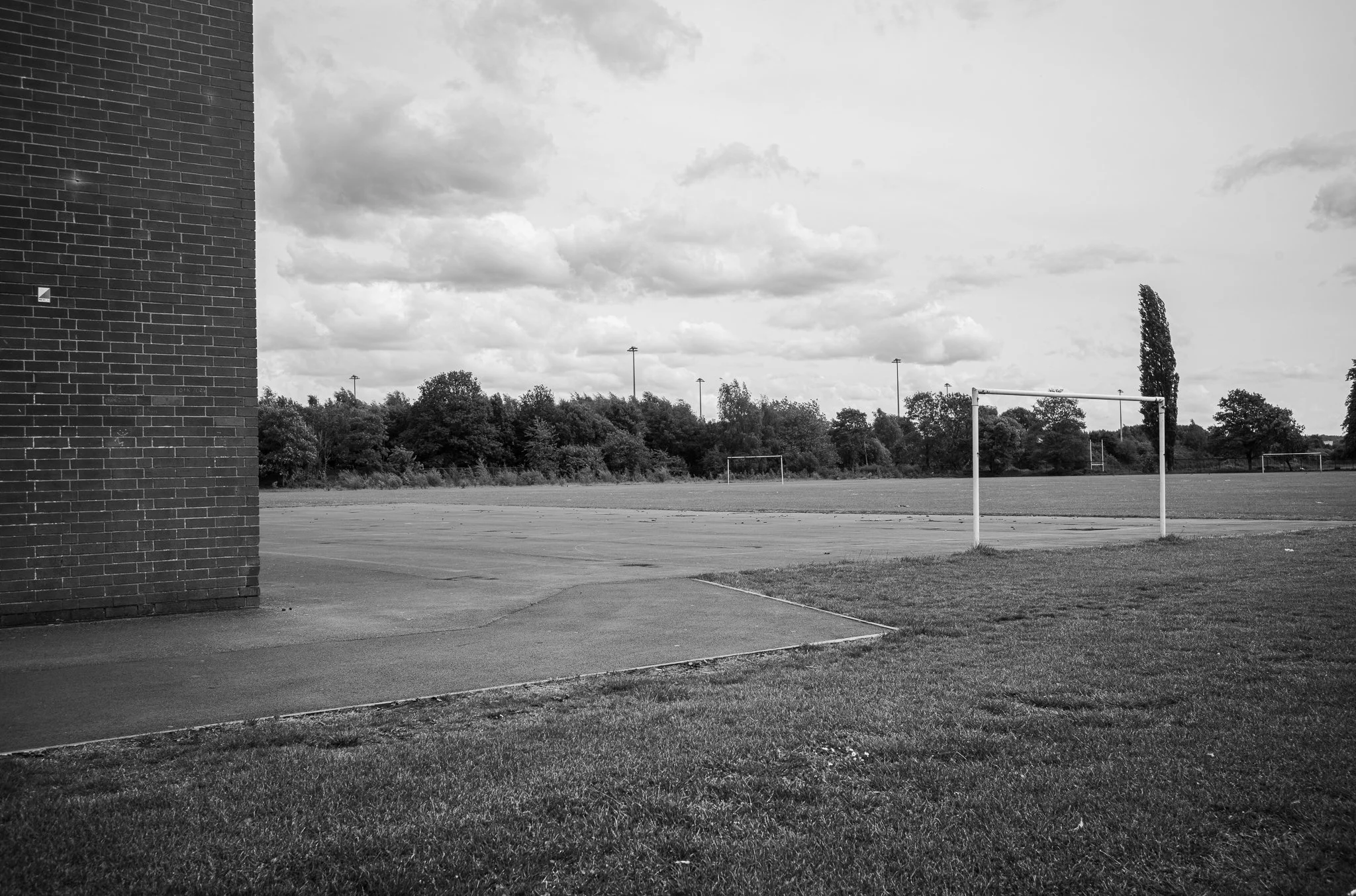
St Gabriels High School, Bury: Sixteen Forever
Memory is a currency that can't be banked and demands to be spent. This is how I squandered mine last weekend, returning to an institution that shaped me, four decades earlier.


Part I: The Trespass
MAY 2025: I am standing outside a ten-foot fence on an unremarkable spring Saturday, fully intending to do nothing more than photograph the exterior. That felt like enough. I was content to stay on the right side of things, circling the perimeter while memories drifted in and out, uninvited but welcome.
Then I spot the tree.
Its branches push past the fence line, casual and unapologetic, as if rules do not really apply to trees. Its roots seem to belong to both sides, one foot in, one foot out. Looking at it, I realise this is not a new idea. Someone else has climbed this before. That changes things.
I give it a closer look. Maybe I could do it too. It is a stretch, and I am fifty-five, not twenty-five, but the branches offer a workable route over the spikes. Getting back out might be awkward. I choose not to dwell on that. Something stronger than curiosity nudges me forward, an old instinct that ignores sensible objections and reminds me I am still capable of bad decisions for good reasons.
When my feet hit the ground inside, the space opens up around me. Proper space. A breeze. A wide playing field. A calm I was not expecting. I take a few steps and it feels like walking straight into a pile of memories. Games. Shouts. The thud of a ball. Goals, corners, free kicks. The whistle. Summer sports days. Lying on the grass making daisy chains while the girls chatted nearby. All of it arrives at once.
Time gives up. Saturday traffic fades. A quad bike somewhere on the old cross-country routes dissolves into nothing. Even the sirens retreat. I am suspended between then and now, caught in a narrow gap where decades collapse and lose their edges. Not quite 2025, not fully 1986. Just that strange overlap where both exist at once. I think of Rogue Male, of retreat and concealment, of occupying a space between worlds.
As I head towards the main building, I feel a pull, though it is faint. Not the weight of belonging, more like an echo. I am trespassing, technically, but the word does not sit right. How do you trespass somewhere that made you? There is a flicker of concern about alarms or being spotted, but it barely registers. Whatever drew me in is louder than that.
The silence is complete and deeply wrong. Schools are not meant to be quiet. They are built for noise, for overlapping voices, for laughter that erupts without warning and never quite stops. I find myself listening for people who are no longer here. Mr Robinson’s simmering authority. Sister Kathleen’s disbelief at our general behaviour. Mr Wroe’s enthusiasm and dry humour. Mrs Healy’s musical patience and devastating looks when we tested it. Mr Sutton’s flustered attempts at control. Mr Farrell’s geographic geography, yes, I know. Mrs Lancashire’s immaculate pronunciation and clothes. Mrs Watson’s intensity. Terry Woolhouse saving the whistle for when it really mattered - when it was over. Gerry Byrne picking teams in the gym. Mr Hopkins appearing suddenly around corners, as if summoned.
I reach the building and place a hand on it. The recognition is immediate. What surprises me are the smells. They arrive without warning, dragged up from somewhere deep and long neglected. The sharp chemical tang of the science labs. The ever-present mix of floor polish and chalk dust. The comforting sawdust and varnish from the woodwork room. The unmistakable advance notice of school dinners, announcing themselves hours before lunchtime. Even the damp wool scent of uniforms drying on radiators in winter. These smells hit harder than anything I can see. They bypass thought entirely and drop me straight back into 1986. I breathe in, slightly ridiculous, trying to catch hold of something that no longer exists.
I walk around, looking for what remains. Much has changed. Renovations everywhere. New cladding. New fascias and soffits. Plastic windows where metal once rattled, double-glazed instead of permanently leaking. But the brick is the same, just a little more tired. Some of the paths are unchanged too, stubbornly familiar.
Other spaces have been filled in. Where there was once fresh air, there are now gardens or temporary buildings. A glass-roofed outdoor canteen has appeared between the old canteen and the sports hall. Walls have been opened, areas enclosed. The passageway around the boys’ yard is now indoors. It brings to mind Duror’s forest in The Cone Gatherers. A place altered and reshaped, yet still holding something essential beneath the changes. Something that refuses to disappear.




Part II: The Return
In the boys’ yard, I find myself caught between two realities. In the physical present, I am an intruder. In the emotional one, I am exactly where I belong. It feels like the first day back after the summer holidays, when everyone looked slightly unfamiliar, taller maybe, trying to reassemble themselves. The difference is that they are not here. Only I am. Still thirteen or fourteen in my head, returning after time away. A rush of air passes through and I almost hear it, the low murmur of voices, my classmates occupying the space as they always did. Forty years have passed, yet the memory feels absurdly fresh.
These names surface without effort, lining themselves up like a register. Tom Claypool. Ian Gilmore. Neil Gowing. Andrew Knight. Andrew Lilley. Simon Murphy. Mark Radovic. Eric Tamanis. Paul Teece. Andrew Walsh. Simon Williams. Paul Zdybal. I can see them all, fixed in 1986, uniforms pressed, faces permanently young. Then the girls, just as vivid. Siobhan Bierne. Paula Cockshutt. Karen Cooke. Siobhan Costello. Nicola Dawson. Helen Delargy. Charlotte Duxbury. Hilary Farrington. Martine Gee. Lisa Hogan. Lisa Kenny. Lisa Magee. Cora Mahoney. Laura McTague. Frances Marshall. Rosalind Naylor. Ann Taylor. Melanie Waterworth.
We breathed this air. We stood on this tarmac. This place held everything, the arguments and alliances, the bold claims and quiet fears, the certainty we performed and the doubts we hid.
I run a hand along the rail leading down from what used to be the science block, half-expecting an alarm to go off. Nothing happens. The geese on the playing field look on, unimpressed. The security cameras watch without seeing. The metal is cold, anonymous. It offers no bridge back, other than the one already built in my head. I think of Prince Hal, stuck between who he was and who he was meant to become. I feel much the same, holding two versions of myself at once, belonging fully to neither.
The camera is necessary and useless in equal measure. I take photographs knowing they cannot touch what I am actually experiencing. Not the empty yards or the altered buildings, but the sense of us still being here together. The particular light of a Friday afternoon when the weekend felt endless. The noise of thirty voices answering a question in unison. The photographs will show walls and windows, concrete and sky. They will not show the memory that sits over everything, invisible but dominant.
The renovations feel oddly personal, as if someone has tried to overwrite the place I knew. They have not succeeded. My St Gabriel’s still exists, layered over this newer version, the two sitting together like a double exposure. I feel a bit like Davies in The Autobiography of a Supertramp, both participant and observer in my own life, watching myself move through time with borrowed eyes.
Eventually I head back towards the tree and the fence. Getting over it is harder than getting in. I hesitate, briefly concerned about impaling myself on this fence, which feels fitting in its own way. When I land outside, something drops away. The energy drains. The world resumes its proper volume. A car goes past. Someone calls after a dog. Time starts behaving again. The spell loosens, though it does not disappear entirely.
The photographs are not really of buildings or empty playgrounds. They are attempts to hold onto something that cannot be held. The feeling of standing in a place where time has both passed and stalled. Of being an outsider in a space that still feels, stubbornly, like mine. They are not records of St Gabriel’s in 2025, but of the collision between the school that lives in memory and the one that still stands in brick and mortar.
And then I walk away, for the last time. Forty years separate the official departure in 1986 and this unauthorised one in 2025, yet they are bound together. I was here. We were all here. And somewhere, improbably, we still are. Sixteen forever. Held in memory. Waiting, as if the bell might ring once more.









